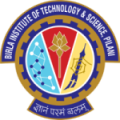“Advanced Neuroimaging” is the course of Higher School of Economics for graduate and PhD students in frame of the iBrain project.
EEG (electroencephalography) is the measurement of electrical potential differences across points on the scalp using sensitive equipment. These small potential differences are the result of electrical activity within the brain and are associated with brain function. The coherent activity of cortical pyramidal neurons generates ionic currents, and these give rise to electric field and electric potential variations. The measured voltages are of µV range (microvolt, or one millionth of a Volt) and are typically recorded at multiple scalp sites simultaneously. Although other important techniques exist to study brain function, EEG offers excellent temporal resolution (millisecond scale) and moderate spatial resolution (cm scale) using modern analysis techniques such as cortical mapping. EEG remains unparalleled in ease of use. MEG (magnetoencephalography) is a method of estimation of electrical brain activity via measurement of tiny magnetic fields that accompany changes in electric potential of the cortex. The origin of these changes in general view is same as for EEG, but, since tissues of a head are nominally transparent for magnetic fields, the topography of the signal does not suffer from anisotropy of skull, skin and neural tissue. Therefore, the spatial resolution of modern MEG systems is much better than for EEG still saving time resolution of the last one. On the other hand, tiniest magnetic fields (in range of femtoTesla or 10-15 Tesla) require very precise state-of-art sensors called SQUIDs (superconductive quantum interferometers) placed in liquid helium. This architecture apparently leads to high operational costs and necessary to build a special magnetic shielded camera around the magnetoencephalographic device. To sum up, MEG data processing results in the very precise spatiotemporal mapping of the brain activity in cortical areas that help scientists to construct a detailed picture of the interplay of neuronal populations, especially when complemented with other techniques. Non Invasive Brain Stimulation techniques are able to modulate human cognitive behavior. Among these methods are transcranial electric stimulation and transcranial magnetic stimulation that both come in multiple variants. A property of both types of brain stimulation is that they modulate brain activity and in turn modulate cognitive behavior. They are optimal tools for investigating brain activity in basic research and for neurorehabilitation purposes. It includes TMS, tDCS, tACS. fMRI (functional magnetic resonance imaging) is a neuroimaging technique which allows to visualize a brain activity-related signal across the whole brain with a millimetric resolution. fMRI requires an MRI scanner functioning with a specific protocol that extracts the BOLD (blood oxygen level dependent) signal, Although the BOLD signal hinges on the magnetic properties of blood, it has been shown to be a reliable proxy of time series of brain activity. The major drawback of the BOLD signal, besides being an indirect measure of neural activity, is that it is sluggish, i.e. it has low temporal resolution (~8s) and it is delayed (~6s). However, it is virtually, to this day, the only technique which allows whole brain visualization at a reasonable cost. One of the course’s main foci is on acquisition of the skills in the use of Brain Stimulation and Electroencephalography techniques. Therefore, it will mainly consist of 50% of hands-on learning and 50% of lectures on the related to advanced aspect of neurophysiology theory. At the end of the course we will expect participants to be able to collect, analyze and interpret EEG/MEG, TMS, tDCS, tACS, and fMRI data.
This course consists of few blocks:
- Advanced electroencephalography and magnetoencephalography analysis, source localization and statistics
- Advanced analysis of the functional magnetic resonance tomography (fMRI)
- Advanced programming of the cognitive neuroscience studies
- Advanced programming of the cognitive neuroscience studies
- Combination of EEG, TMS, fMRI in cognitive neuroscience studies
- Model-based imaging
- Imaging Genetics
Literature:
- Walsh, V., & Cowey, A. (2000). TIMELINE: Transcranial magnetic stimulation and cognitive neuroscience. Nature Reviews Neuroscience, 1(1), 73–80.
- Logothetis, N. K., & Wandell, B. A. (2004). Interpreting the Bold Signal. Annual Review of Physiology, 66(1), 735–774.
- Jackson, A. F., & Bolger, D. J. (2014). The neurophysiological bases of EEG and EEG measurement: A review for the rest of us. Psychophysiology, 51(11), 1061–1071.
- John Ashburner, Gareth Barnes, Chun-chuan Chen, Jean Daunizeau, Guillaume Flandin, Karl Friston, … Christophe Phillips. (2014). SPM12 Manual The FIL Methods Group (and honorary members).
- Bortoletto M, Veniero D, Thut G, & Miniussi C. (2015). The contribution of TMS-EEG coregistration in the exploration of the human cortical connectome.
- Hari, R., & Salmelin, R. (2012). Magnetoencephalography: From SQUIDs to neuroscience: Neuroimage 20th Anniversary Special Edition.
- Cappelletti, M., Gessaroli, E., Hithersay, R., Mitolo, M., Didino, D., Kanai, R., … Walsh, V. (2013). Transfer of Cognitive Training across Magnitude Dimensions Achieved with Concurrent Brain Stimulation of the Parietal Lobe.
- Hauk, O., Wakeman, D. G., & Henson, R. (2011). Comparison of noise-normalized minimum norm estimates for MEG analysis using multiple resolution metrics.
- Birbaumer, N. (2006). Breaking the silence: brain-computer interfaces (BCI) for communication and motor control. Psychophysiology, 43(6), 517–532.
- Brosnan, M. B., Arvaneh, M., Harty, S., Maguire, T., O’Connell, R., Robertson, I. H., & Dockree, P. M. (2018). Prefrontal Modulation of Visual Processing and Sustained Attention in Aging, a tDCS-EEG Coregistration Approach. Journal Of Cognitive Neuroscience, 30(11), 1630–1645.
- Anna Lisa Mangia, Marco ePirini, & Angelo eCappello. (2014). Transcranial Direct Current Stimulation and Power Spectral Parameters: a tDCS/EEG co-registration study.
Language: English










